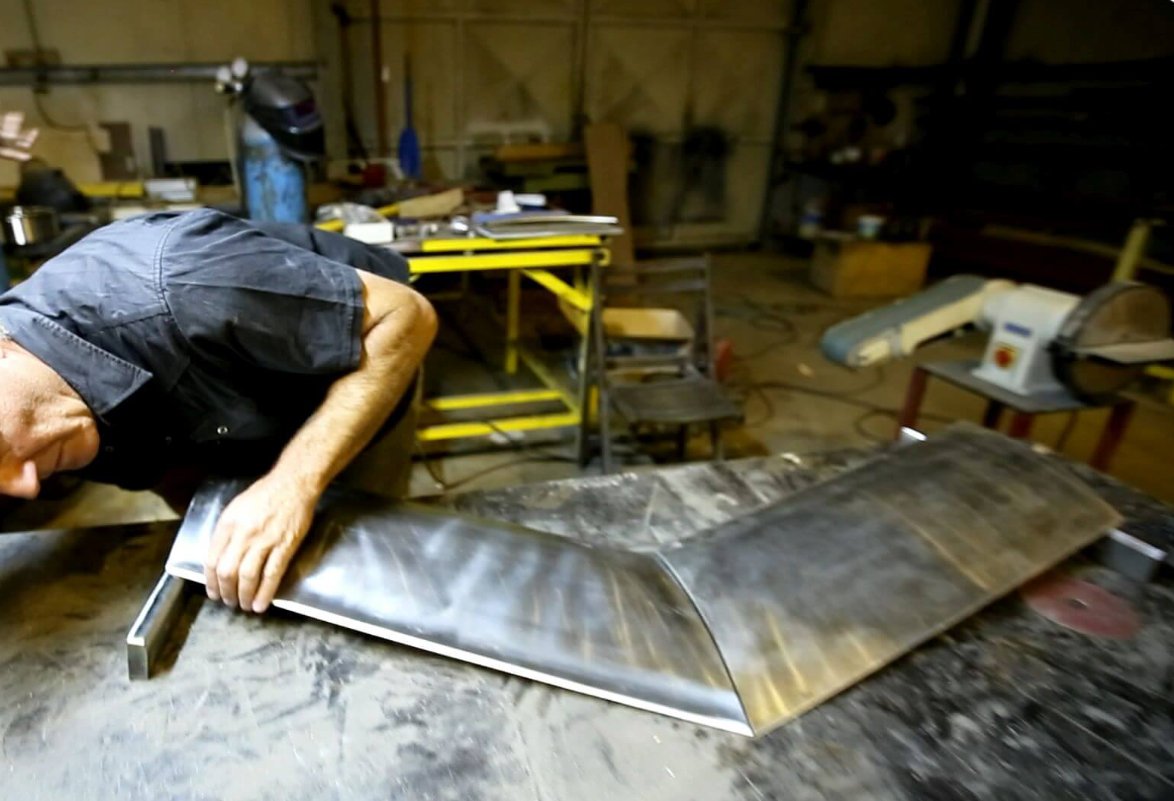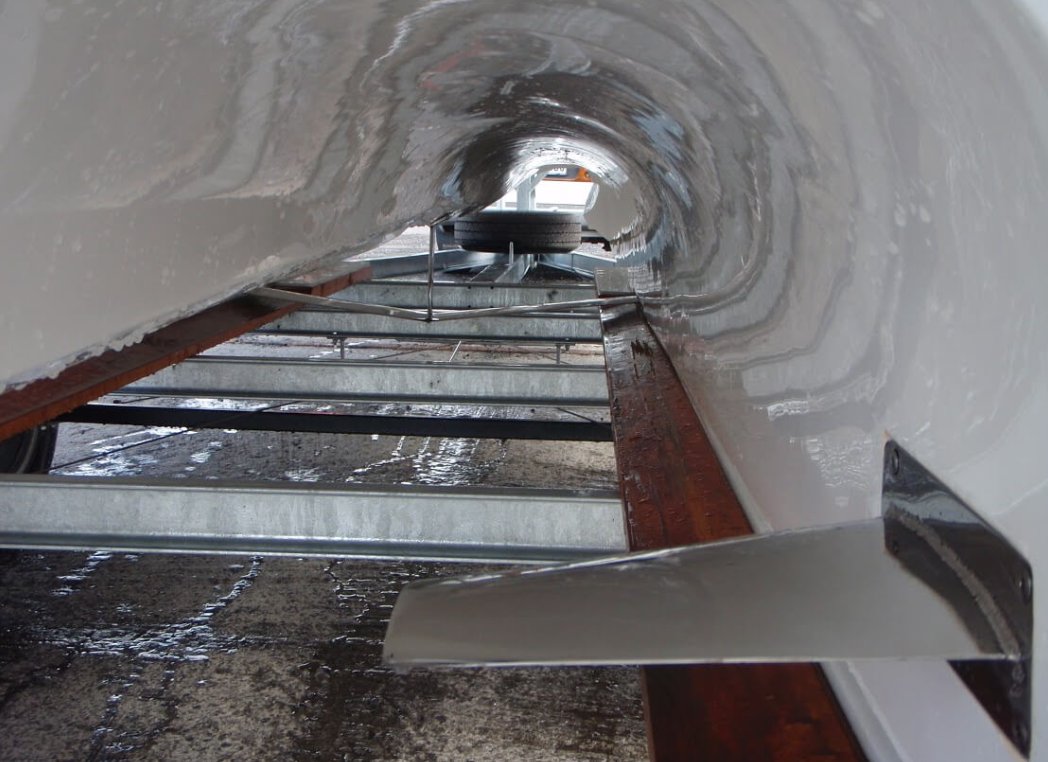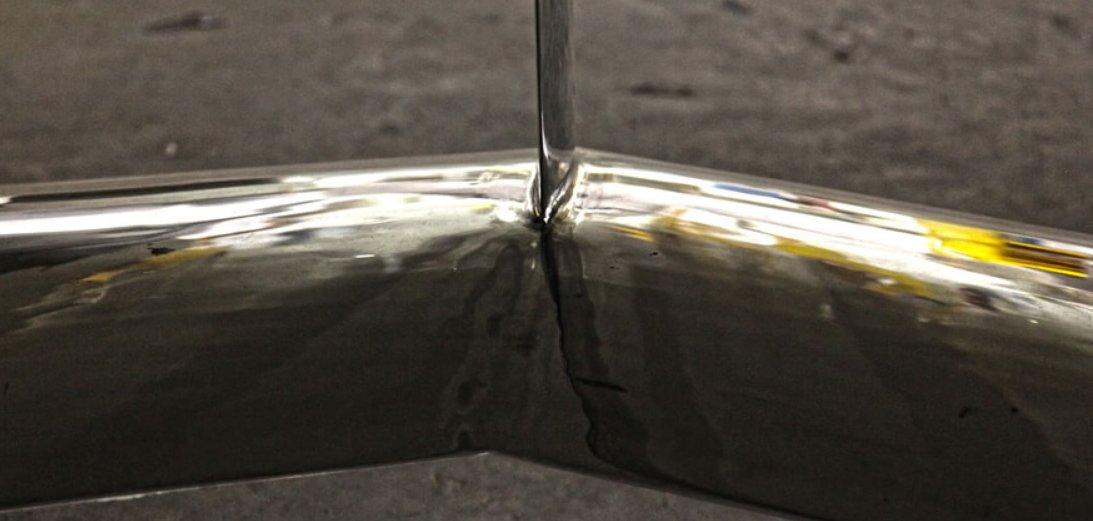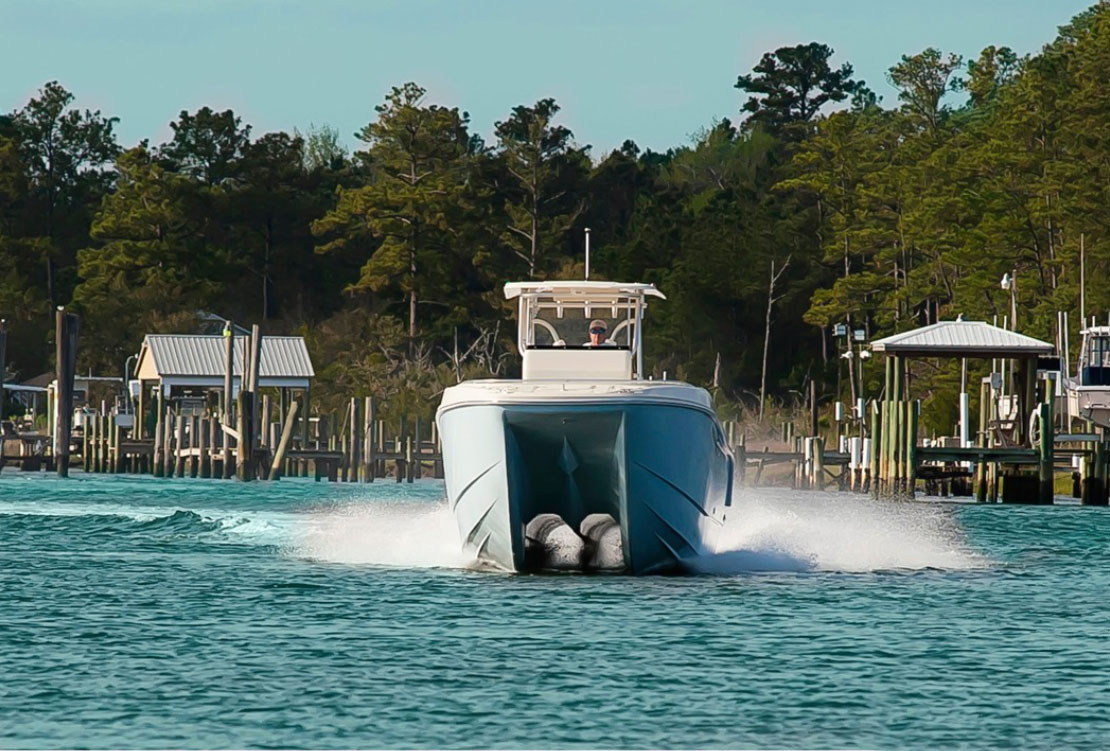What is Hydrofoil Technology?
The basic principle of the Hysucat Technology is an efficient Hydrofoil System in the tunnel between the two hulls. This system consists of a main foil which is located between and parallel with the bottom of the hulls, slightly forward of the craft’s center of gravity. Aft, there are two smaller trim foils in the tunnel near the transom which act like tail wings on an aircraft to ensure a level planning attitude.
It has a streamlined profile form which, when water runs over and below it, creates pressure differences on the upper and lower surfaces with parallel flow over the wing (foil), pressure is negative on the top surface and positive on the lower surface and this generates force L (called Lift) vertical to the inflow and a drag force D (called Drag), parallel to the inflow , such wings are used on aircraft wings, propeller blades, pump blades, fan/turbine blades and hydrofoil crafts.
As soon as the craft is moving, the hydrofoils create dynamic lift which help raise the whole craft, thus reducing the wet area (Drag), which provides two important outcomes: less resistance and increased buoyancy , because the efficiency of the hydrofoils is significantly better than a conventional boat (monohull or catamaran) without foils, boat with Hydrofoil Technology can carry more weight at speed with less power.
It has a streamlined profile form which, when water runs over and below it, creates pressure differences on the upper and lower surfaces with parallel flow over the wing (foil), pressure is negative on the top surface and positive on the lower surface and this generates force L (called Lift) vertical to the inflow and a drag force D (called Drag), parallel to the inflow , such wings are used on aircraft wings, propeller blades, pump blades, fan/turbine blades and hydrofoil crafts.
As soon as the craft is moving, the hydrofoils create dynamic lift which help raise the whole craft, thus reducing the wet area (Drag), which provides two important outcomes: less resistance and increased buoyancy , because the efficiency of the hydrofoils is significantly better than a conventional boat (monohull or catamaran) without foils, boat with Hydrofoil Technology can carry more weight at speed with less power.
Bering Marine is a leading company in using Hysucat technology. Our unique foil assist technology provides an optimal self-correcting dynamic. The foils carry between 40% to 75% of the vessel’s displacement. This reduces the hulls’ volume which greatly decreases drag and improves seakeeping.

Lowered resistance and decreased propulsion power reduce wake wash signature which is beneficial for waterways that have wave wash restrictions and limitations. Additionally, the foil assist cat is the optimal form for the type of use that requires speeds over 30 knots.

The hydrofoil wings create an inherent dampening effect, giving the vessel a much smoother ride. This enables the boat to operate at a higher average speed in rough and unpredictable seas.

Efficiency, seakeeping, low wake wash, and decreased emissions provide substantial benefits to our customers. Reduced drag on the underwater sections of our vessel improves efficiency. This results in lower propulsion requirements and reduced fuel consumption.

